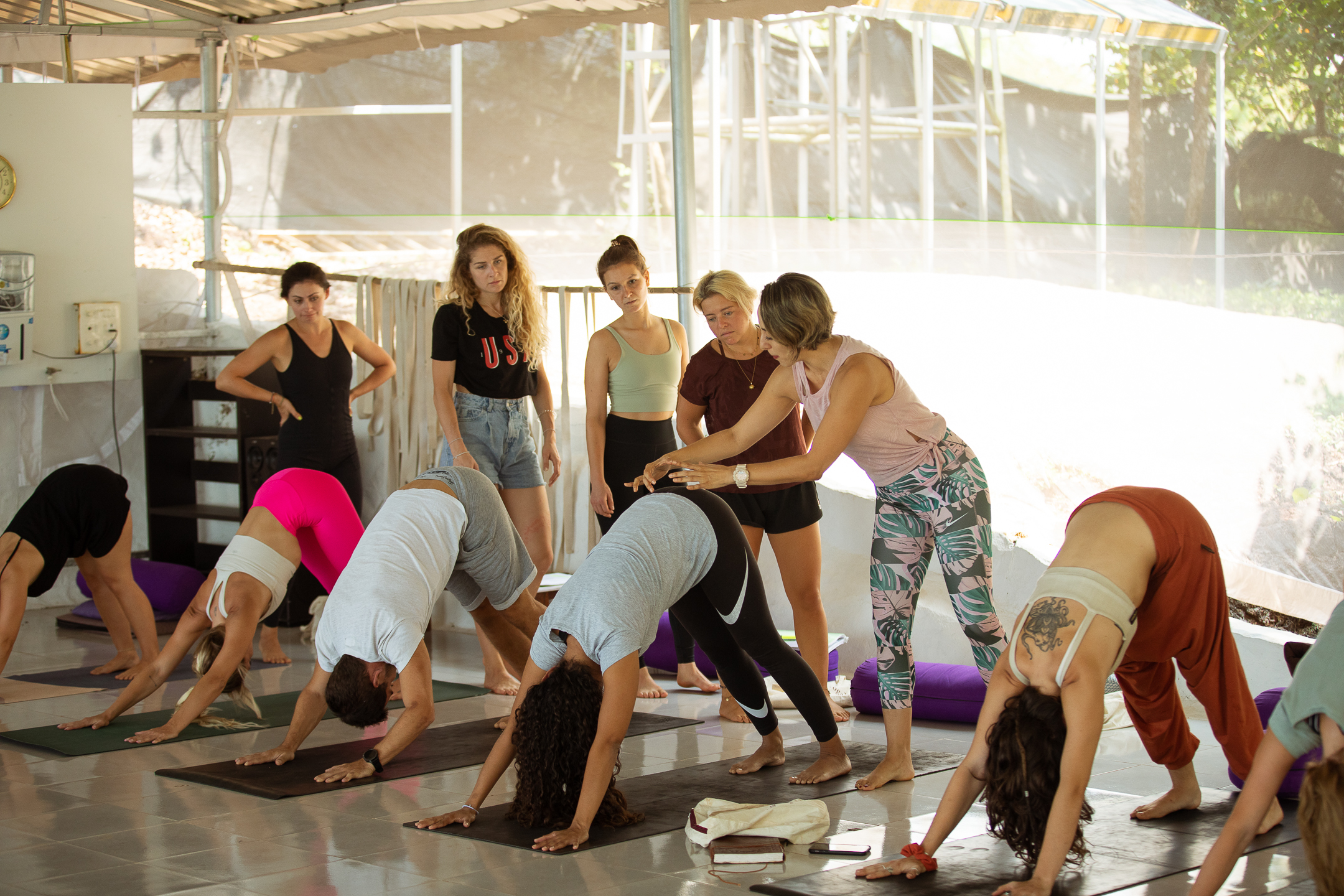How Can Yoga Teachers Benefit From Knowing Yoga Anatomy?
Yoga is not a ‘one size fits all’ practice. Every person is different and every body structure is unique. When teaching yoga asanas, it’s no longer just about providing instructions and the basic benefits. With health and wellness gaining immense popularity, practitioners want to know more about what they are practicing. Students look for classes that provide a holistic and well-rounded experience of yoga asanas, pranayama, and meditation, and how each of these practices benefit their body and mind.
Whether it is about what is happening to a group of muscles in a specific posture, or how a posture affects different systems, or how a breathing exercise is strengthening the lungs, there will always be questions. For teachers, knowing how the human body is structured is helpful, even if one starts with simple basics. Learning about yoga anatomy can boost a teacher’s expertise in yoga. When teachers can go beyond ‘this asana stretches and strengthens the back’, or ‘this posture opens up the chest region’, students are more intrigued and interested in what they are learning.

Let’s look at the key reasons you should take up a yoga anatomy certification course.
- Improves the effectiveness of yoga asanas: Anatomy for yoga teachers enables you to get an in-depth understanding of the human body structure, joints and their impact on movement, muscles and how they work, etc. As teachers you will know more about the alignment of asanas, and how they can be different in each individual. This will help you understand when to urge students out of their comfort zone, and when to stop. Explaining in-depth benefits of poses and how they impact various functions like digestion, respiration, stress levels, sleep quality etc., also becomes possible after a yoga anatomy teacher training.
- Injury prevention: A critical responsibility of yoga teachers is to ensure injury prevention. Yoga anatomy creates a framework for potential of movement, self exploration and teaching. Unsuitable instructions lead to injuries. Depending on the structure and weakness of an individual, injuries can happen in almost any area of the body. Asanas should be practiced in a safe and healthy way. Only with a deeper understanding of functional yoga anatomy, can you, as a teacher, help students progress in a safe way.
- Teaching in a holistic way: Yoga anatomy is an important module that helps teachers explain various concepts, benefits, contraindications and the impact on the body and mind in a holistic way. Knowing where energy gets blocked, how to open up tight muscles to allow energy flow, what to practice to strengthen a region like the lower back, shoulders, hips, etc. are aspects of yoga that provide a holistic experience. While courses on mudras (gestures), bandhas (locks) and pranayama (breathing exercises), among others, will cover such topics, a yoga anatomy online course will fill in the gaps for you from a science perspective. Read this article to get a better understanding of what yoga anatomy consists of.
- Providing the right guidance: As important as injury prevention is providing the right guidance. Practitioners want to know why they are doing an asana. They want details of how a particular asana is impacting systems, organs and tissues. They want to know why asanas should not be done in certain health conditions. Even in pre and post natal yoga, practitioners will ask why a certain asana is good for the mother, and why one is not. Women might want to know why inversions are not advised during periods. Sometimes, students might face challenges with postures because each body is unique. Knowing yoga anatomy will help you navigate such challenges and answer these questions with confidence.
- Boosts confidence and credibility: When you have answers at your fingertips, your credibility and reputation increases. If you are going beyond the basic information and providing students with more than expected, your value as a teacher increases. This improves your confidence, allowing you to teach with better clarity and focus, and in turn help your students progress. Furthermore, in the long run, this improves your career as a yoga teacher.
Yoga is not just an exercise or a wellness activity. It involves science, physiology, psychology and anatomy, among others. Knowing the multiple aspects of the subject helps you progress in a sustained and confident manner. Certain skills, like when to push a practitioner out of their comfort zone, and when to stop, are developed only with practice and knowledge. Take it a step further from ‘the Cobra Pose strengthens the lower back’ to explain how backbends posteriorly compress the lumbar spine and strengthen the back muscles, while the abdominal muscles are stretched and lengthened. Imagine the awe on your students’ faces when you explain this! 🙂
Contact us if you are interested in learning more about the functional anatomy and discover how it can make you a better yoga teacher. At Sampoorna Yoga Online Academy, you will find specialized help focusing on your well-being and expanding your knowledge of yoga, no matter where you are.


